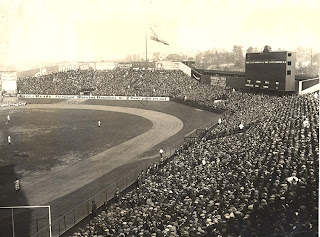A look at New York City's Development:
1700s
Although the country in the 1700s was predominantly urban farmland, New York City was developing into a hub for trade. Political issues of the time included debate over government creation (forming the Articles of Confederation and the Constitution) and protecting the land during the American Revolution.
 |
| Wall Street 1774 |
 |
| Broadway 1798 (New York Public Library) |
|
 |
| New York City 1752 (New York Public Library) |
1800s
The development of machines caused a better quality and quantity of products being created. Business owners, predominantly in cities, hired people to use these machines to grow their business. Thus the Industrial Revolution came about, causing rapid urbanization.
With this urbanization, immigrants were moving into the city to pursue the "American Dream". Fordham University published, "Between 1815 and 1915, over 33 million immigrants arrived in the United States... Irish Immigrants were poorer than other immigrant groups, and therefore lived in the worst conditions. By the 1840's, Five Points, an infamous slum reported to have averaged one murder per day, was predominantly Irish." 1
The dramatic overpopulation of New York caused the obvious overcrowded tenements pictured below, poverty, hunger, crime, disease, and a high competition for factory jobs that came with very low pay.
 |
| New York City in the 1800s. | | | |
 |
| 1800s tenement setting. | | |
|
 |
 |
| 1858: The beginning of Macys. It started as a Dry Goods store and then a department store. During the time of dangerous factory work, people were fortunate to get safer jobs in stores such as these. |
|
 |
| The Brooklyn Bridge in 1883. Harper's Weekly, May 26, 1883. Brooklyn Museum Libraries. |
 |
Fire of 1835, which crippled the city.
 |
| In the 1862s, Frederick August Otto Schwarz opened "Schwarz Brothers- Importers", which changed its name to FAO Schwarz. It remains as the oldest toy store in the United States. (2) |
|
 |
| Casino Cafe (Central Park) 1885. (Museum of the City of NY) |
 |
| Mulberry Bend in 1888 by Jacob Riis. |
|
 |
| Bandit's Roost in the 1880s by Jacob Riis. 59 1/2 Mulberry Street, from the street pictured above, was the most dangerous part of the city. | | | | |
|
 |
|
| 1880s (Museum of the City of NY) |
 |
| Mulberry Street (Little Italy) in the late 1880s. |
| | |
 |
| St. Nicholas Rink 1898 (Museum of the City of NY) |
1900s:
The 1900s was the time of worker's rights, challenging trusts and monopolies, cleaning up the city, and providing better living situations for tenants.It was a time of "purifying" the government.
 |
| Mulberry Street (Little Italy) 1900 by Detroit Publishing |
|
|
 |
1902 photo taken by Jacob Riis of an Essex Market School.
  |
The two pictures above are Coney Island in 1903 and 1898 (both from the Library of Congress). It was a great escape from the long grueling work hours in a factory. Pictured below is Coney Island in 1926 from the Library of Congress.

 |
| Tenement family in 1910. (Museum of the City of NY) | | | |
|
 |
| 1912. Elizabeth Street, NY. (Library of Congress) |
 |
| Photo from Fordham University. |
 |
| Marchers during Prohibition in the 1920s. |
 |
A "speakeasy" in the 1920s.
Pictured below:
Yankee Stadium Opening Day: April 18th, 1923

  |
|
  |
| In 1926, Savoy started the "Lindy Hop". A flapper, pictured above, would have danced at similar jazz clubs throughout NY. | | |
|
 |
| Time Square 1930s. |
 |
| 1930s |
 |
| 1940s by Life Magazine |
|
 |
| 1940s Jazz Clubs |
 |
| Ellis Island "internment camp" during WW11 |
|
 |
| Brooklyn Navy Yard in the 1940s (New York Historical Society) |
 |
| Troops coming home after the War (NY Historical Society) |
 |
| 1950s |
 |
| 1950s |
 |
| 1950s |
 |
| 1955 |
 |
| 1967 photo by James Jowers. |
 |
| 1960s China Town |
 |
| 1960s | |
 |
| 1975 |
 |
| 1970s | |
 |
| 1980s |
 |
| 1980s |
 |
| 1990s |
 |
| 1990s |
 |
| 1990s |
 |
| 1990s |
 |
| 1996 |
2000s:
In the 2000s, NYC faced the September 11th, attacks, made remarkable recovery, and had a technological evolution that took place throughout the world.
 |
| September 11th, 2001 |
 |
| September 11th, 2001 |
 |
| 2007 | |
 |
| 2011 by Evan Joseph |
 |
| Times Square 2009 |
 |
| Easter 2013 |
 |
| The future image of NYC in 2020 by Jason Burkins. |
1. Prium Saywack, Immigration in New York. Fordham University, 2013.
2. FAO Schwarz: Storied History of Legendary Brand. New York City, 2010. http://www.fao.com/shop/index.jsp?categoryId=3810527









